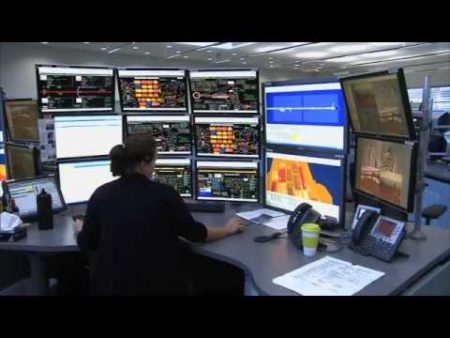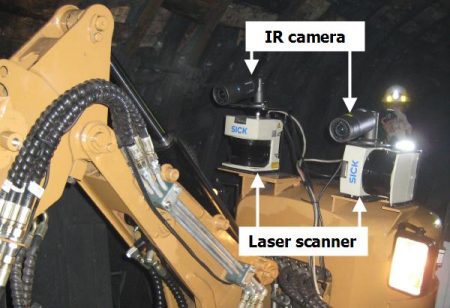December 28, 2016 – President-elect Donald Trump during the campaign told ex-coal miners in Pennsylvania and West Virginia that they should be prepared to get back to work full time when he enters the Oval Office. Why is this likely not to happen?
- Coal is no longer the least expensive fuel for generating electricity. Natural gas, solar and wind are more than competitive these days. So reviving moribund coal mines may make no economic sense.
- Climate change mitigation and adaptation policy and procedures within utilities has become an operating standard meaning returning to coal as a fuel source is increasingly unlikely.
- Mining is one of the industries most likely to be automated meaning fewer workers will be needed even if coal mines get a boost from a Trump presidency.
It is the last point that will most likely impact coal and other mining jobs over the next decade and beyond. The industry is embracing automation. The goal is to get people out of the mines and robotic equipment into them. Mining companies are embracing digital processes and artificial intelligence.
At a recent conference, Michelle Ash, Senior Vice President in charge of transformation and innovation at Barrick Gold, a Toronto-based mining company, sums up the transformation stating the company’s goal is to use digital technology “not only to augment our people’s abilities so their decision making, their insight, and their ability to communicate and understand…..speed them up, reduce the resources required or…….eliminate them.” Reflecting Ash’s comments, a recent McKinsey & Company study stated that 96% of some mining jobs can be automated.
Sandvik Mining, a Swedish company, is one of a number of companies providing automation tools for the mining industry. Their technological innovation impacts both surface and underground operations. Sandvik describes the brave new mining world over the next two decades as one that is fully automated from working at the extraction face to remote controlled autonomous load-haul and dump transportation systems, to automated crushers. States Taina Heimonen, of Sandvik, “we are trying not just to automate certain parts of the work but to optimize the whole mining process.” A single operator in a control room environment will be able to manage a fleet of underground robotic miners working the ore deposits. Sandvik’s first AutoMine System was deployed in Chile in 2004. Since then the company has installed its technology in mines in Canada, Finland and South Africa. The Internet of Things, GPS and RFID are all part of these new mining systems. Human involvement is minimized. Heimonen states, “we have had cases where the hauled volume has doubled and the loaded volume has increased by more than 25% compared to manual operation.”
What it means for mining companies is improved operations and a better bottom line. Safety improvements from autonomous load and haul technology have reduced errors associated with human fatigue in mines. Robotic drilling systems and autonomous transportation don’t require the same environmental controls and safety measures needed for humans. With underground conditions at great depths subject to huge rock pressures, high temperatures and humidity, and a lack of breathable air, human factors add significant operational costs. Mines employing humans in these conditions require ventilation and cooling systems and enhanced safety measures including safe rooms in the event of a rock burst or other accident. When using automated equipment loaded with sensors that report continuously to an above ground operator, all of those needs go away. The mining operator (see image below) can flag potential issues at the ore face without putting any human miner at risk. In Timmins, Ontario, at the Kidd Mine which I recently wrote about because of the discovery of the oldest water on Earth, has been using Sandvik technology since 2012 contributing dramatically to productivity improvements and worker health and safety.

Automated mining systems work 24-hours a day. Driverless transportation for loading and hauling is proving to be 15% cheaper to run than human-operated vehicles according to Rio Tinto, one of the world’s largest mining companies. The driverless technology works fine in an off-the-public road application because the environment of mine operations is well mapped and managed. There are no bathroom breaks, no shift changes, just software. That means many minutes saved and productivity improvements that impact the bottom line.
Which brings us to the President-elects’ promise to the coal miners of the United States who have been promised a return to their jobs. Even if shuttered coal mines reopen the likelihood of a return to full employment is zero. All large mining companies recognize the enormous advantage that automation provides. The downward pressure on the price of coal in an expanding world of alternative energy choices makes it unlikely that mine operators will pick humans over autonomous robotic systems. Staffing levels seen in the past will never return to coal mining operations. Any new jobs created will be in the software development, management and servicing of robot miners like the one seen in the image below.

In its latest annual coal report from the U.S. Energy Information Administration (EIA) the data shows an industry in steep decline.
- 2015 coal production dropped 10.3% year-over-year to the lowest annual level since 1986.
- Productivity capacity in 2015 decreased for the fourth year in a row with a decline of 6.3% from 2014 levels.
- Average number of coal mine employees decreased 12.0%, the lowest on record since EIA began collecting data in 1978.
- Coal consumption in 2015 dropped 13.1% from 2014 levels with the power sector consuming about 92.5% of the total.
- And the price of coal declined by 8.6% from 2014.
For the incoming U.S. President, the likelihood of turning these results around is near zero.










